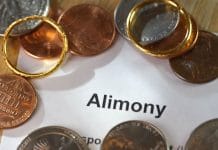Picture this: You’re staring at a $800 car repair bill, your emergency fund is bone dry, and every credit card offer screams 24.99% APR in bold letters. Sound familiar?
Here’s the plot twist most Americans don’t know about—legitimate no-interest loans actually exist, and they’re not some too-good-to-be-true scam. We’re talking about real money from real organizations that won’t charge you a penny in interest.
If you’ve been burned by predatory lenders or you’re simply tired of paying interest on top of interest, this guide will show you exactly where to find these hidden gems and how to qualify for them.
What Exactly Are No Interest Loans?
Let’s cut through the confusion. A no-interest loan is exactly what it sounds like—you borrow money and pay back only the principal amount. There are no sneaky interest rates, no compound calculations, just the original amount you borrowed.
Unlike those “0% APR for 12 months” credit card promotions that jack up rates after the honeymoon period, genuine no-interest loans maintain zero interest throughout the entire repayment term. Think of it as borrowing money from that generous relative who never asks for extra—except it’s from legitimate financial institutions.
The Real Deal vs. Marketing Tricks
Here’s where many people get confused. Zero-interest loans differ significantly from promotional credit card offers:
Feature | No-Interest Loans | 0% APR Credit Cards |
Interest Rate | 0% permanently | 0% temporarily (6-18 months) |
After Promotion | Still 0% | Often 20%+ APR |
Credit Requirements | Often flexible | Usually requires a good credit |
Purpose | Specific needs | General spending |
Counseling Included | Frequently | Rarely |
Who Offers These Zero-Interest Loans?
You won’t find these at your typical big bank. Most 0-interest loans come from mission-driven organizations that prioritize community impact over profit. Here’s where to look:
Community Development Financial Institutions (CDFIs)
CDFIs are your best bet for substantial no-interest funding. These federally certified organizations specifically serve underbanked communities. They offer everything from emergency assistance loans to small business microloans—all with community impact as their primary goal.
The Opportunity Finance Network maintains a searchable directory of CDFIs nationwide. Simply enter your ZIP code and discover options you never knew existed.
Credit Unions: The Member-Owned Alternative
Many credit unions offer 0 APR loans to members facing financial emergencies. Unlike banks focused on shareholder profits, credit unions return earnings to members through better rates and services.
Some credit unions provide “payday alternative loans” with zero interest for qualifying members. The catch? You typically need to maintain a minimum share balance and demonstrate membership loyalty.
Faith-Based Organizations
Churches, mosques, synagogues, and other religious institutions often operate benevolence funds—pools of donated money specifically designated for zero-interest loans to congregation members and community residents.
These programs usually require a pastoral recommendation or spiritual counseling alongside financial assistance. Don’t overlook this option if you’re comfortable with the faith-based component.
Nonprofit Microlenders
Organizations like Grameen America and local microlenders occasionally offer fully subsidized loans where philanthropic donations cover interest costs. These programs typically target small business owners and entrepreneurs in underserved communities.
Real People, Real Stories: Who Benefits Most?
Sarah, the Budget-Conscious College Student
Sarah represents millions of students juggling tuition, textbooks, and living expenses. When her laptop crashed during finals week, she couldn’t afford another high-interest credit card payment.
Her university’s financial aid office connected her with a 0 interest funding program specifically for emergency student expenses. She borrowed $600 for a replacement laptop with 12 monthly payments of $50—no interest, no fees, no credit check.
Key Takeaway: Always check your school’s emergency aid programs before turning to private lenders.
Maria, the Single Parent Facing Medical Bills
As a home health aide supporting two children, Maria couldn’t absorb unexpected medical expenses without choosing between groceries and rent. Traditional lenders either denied her applications or offered crushing interest rates.
A local CDFI provided a $1,200 no-interest loan specifically for medical expenses, with flexible repayment tied to her pay schedule. The loan came with mandatory financial counseling that helped her build an emergency fund for future unexpected costs.
Mike, the Aspiring Food Truck Owner
Mike needed $3,000 for commercial kitchen equipment but couldn’t qualify for traditional business loans. A nonprofit microlender offered zero-interest funding combined with business training workshops.
The program required Mike to attend weekend entrepreneurship classes, but the combination of no-interest personal loans and business education launched his successful taco truck venture.
How to Actually Qualify for No-Interest Loans
Qualification criteria vary dramatically by program, but here are common requirements:
Income-Based Eligibility
Most programs target low- to moderate-income borrowers, often requiring household income below 200% of the federal poverty level for your area. However, “moderate income” can be surprisingly generous—in expensive areas, this might include families earning $80,000+ annually.
Community Connections
Many programs prioritize borrowers with strong community ties. This might mean:
- Residence in specific ZIP codes
- Membership in participating organizations
- Referrals from social service agencies
- Participation in financial literacy programs
Specific Purpose Requirements
Unlike general-purpose personal loans, most no-interest loans target specific needs:
- Emergency expenses (rent, utilities, car repairs)
- Medical bills and healthcare costs
- Educational expenses and job training
- Small business startup costs
- Debt consolidation for high-interest obligations
The Application Process: What to Expect
Applying for 0 loan offers differs significantly from traditional lending. Here’s the typical process:
Documentation You’ll Need
- Photo identification
- Proof of income (pay stubs, tax returns, benefit statements)
- Bank statements (usually 2-3 months)
- Proof of residency
- Documentation of loan purpose (bills, estimates, invoices)
The Interview Process
Most programs require face-to-face or video interviews. Don’t panic—this isn’t an interrogation. Lenders want to understand your situation and ensure you can realistically repay the loan.
Common questions include:
- Why do you need this specific amount?
- How will you manage monthly payments?
- What’s your backup plan if income decreases?
- Have you explored other resources?
Financial Counseling Component
Many no-interest loan programs include mandatory financial education. This isn’t punishment—it’s designed to help you avoid future financial emergencies. Topics typically cover:
- Budget planning and expense tracking
- Emergency fund-building strategies
- Credit building and improvement
- Debt management techniques
Loan Amounts and Repayment Terms
Typical Loan Sizes
Zero-interest loans usually range from $200 to $5,000, depending on the program and your demonstrated need. Emergency loans tend toward the lower end ($200-$1,500), while business microloans can reach $5,000 or more.
Repayment Periods
Most programs offer 3-24 month repayment terms:
- Emergency loans: 3-6 months
- Medical/utility assistance: 6-12 months
- Business/education loans: 12-24 months
Payment Structure
Unlike traditional loans with interest calculations, no-interest loans feature straightforward principal-only payments. If you borrow $1,200 over 12 months, you pay exactly $100 monthly—no surprises, no compound interest, no early payment penalties.
Hidden Costs and Potential Drawbacks
While these loans don’t charge interest, some programs include minimal fees:
Administrative Fees
Some lenders charge small processing fees ($10-$25) to cover paperwork and underwriting costs. Legitimate programs make these fees transparent upfront—anything hidden should raise red flags.
Late Payment Consequences
Missing payments can trigger:
- Flat late fees (typically $15-$25)
- Required financial counseling sessions
- Potential program disqualification
- Rarely, credit reporting of missed payments
Limited Availability
The biggest drawback? 0-interest loans aren’t available everywhere. Rural areas and certain regions may have limited options, requiring longer searches or travel to access programs.
Building Credit with Zero-Interest Loans
Here’s a powerful strategy most people miss: Some no-interest loan programs report positive payment history to credit bureaus. This creates a unique opportunity to build or rebuild credit without paying interest.
Programs That Report to Credit Bureaus
- Many community credit unions
- Some CDFI programs
- Nonprofit microlenders focused on credit building
- Credit counseling organization partnerships
Programs That Don’t Report
- Most faith-based benevolence funds
- Emergency assistance programs
- University financial aid loans
- Some community center programs
Pro Tip: Ask specifically about credit reporting before accepting any loan. If building credit is important to you, prioritize programs that report a positive payment history.
Avoiding Scams and Red Flags
Unfortunately, legitimate no-interest funding programs attract imitators and scammers. Here’s how to protect yourself:
Legitimate Program Characteristics
- Physical address and established community presence
- Clear, transparent terms without hidden fees
- No upfront payment requirements
- Connection to recognized organizations (CDFIs, religious institutions, educational institutions)
- Reasonable qualification requirements
Major Red Flags
- Requests for upfront fees or “processing charges”
- Guarantees regardless of credit or income
- Pressure tactics or time-limited offers
- Lack of physical address or local presence
- Promises that seem too good to be true
Frequently Asked Questions
Can I find zero-interest loans for specific purposes like medical or education expenses?
Absolutely! Many programs target specific needs:
Medical expenses: Hospital charity care programs often partner with local CDFIs for zero-interest medical loans. Patient advocacy nonprofits may also offer specialized assistance.
Education: Beyond campus emergency loans, some career training programs offer interest-free financing for coding boot camps, vocational certificates, and professional development courses.
Small business: While rare, some microenterprise nonprofits provide fully subsidized business loans through foundation grants and philanthropic support.
How do nonprofit microlenders sustain operations without charging interest?
Three primary funding sources enable sustainable 0 APR loans:
- Philanthropic subsidies: Foundations and individual donors underwrite operational costs and loan loss reserves
- Volunteer support: Many programs rely on volunteer loan committees and pro bono professional services
- High repayment rates: Because borrowers understand the community impact, default rates often stay below 5%
Will taking an interest-free loan affect my credit score?
It depends entirely on the lender’s reporting practices:
Programs that may help credit: Community credit unions and some nonprofit microlenders report positive payment history, potentially boosting your score with on-time payments.
Programs with no credit impact: Faith-based benevolence funds and many emergency assistance programs don’t report to credit bureaus, so borrowing won’t affect your FICO score either positively or negatively.
Risk of credit damage: If you miss payments with programs that do report, it could hurt your credit. However, most nonprofit lenders work with borrowers to avoid defaults rather than immediately reporting negative information.
Are there tax implications for borrowing or donating to no-interest loan funds?
For borrowers: Receiving a no-interest loan isn’t considered taxable income since you’re obligated to repay the principal. However, if any portion gets forgiven later, that amount might be taxable under IRS debt cancellation rules.
For donors: Contributions to qualified 501(c)(3) organizations (CDFIs, nonprofit microlenders, religious charities) are typically tax-deductible. Always obtain receipts and verify the organization’s tax-exempt status.
Taking Action: Your Next Steps
Ready to explore loans no interest options in your area? Here’s your action plan:
Step 1: Research Local Options
- Search the Opportunity Finance Network’s CDFI directory
- Contact nearby credit unions about emergency loan programs
- Inquire at your place of worship about benevolence funds
- Check with local community colleges and universities about emergency aid
Step 2: Prepare Your Documentation
Gather the essential paperwork before applying:
- Recent pay stubs or income documentation
- Bank statements from the past 2-3 months
- Documentation supporting your loan purpose
- Photo identification and proof of residence
Step 3: Apply to Multiple Programs
Don’t put all your eggs in one basket. Apply to 2-3 compatible programs to increase your approval odds. Most applications are free, so there’s no financial risk in casting a wider net.
Step 4: Attend Required Counseling Sessions
Embrace any mandatory financial education—it’s free training that could prevent future financial emergencies. Many participants report these sessions provide more value than the loans themselves.
The Bottom Line: Zero-Interest Loans Are Real and Accessible
No-interest loans represent one of America’s best-kept financial secrets. While they require more research than walking into a bank, the savings potential makes the effort worthwhile.
Whether you’re a college student facing unexpected expenses, a parent dealing with medical bills, or an entrepreneur needing startup capital, legitimate zero-interest funding options exist in communities across the United States.
The key lies in understanding these programs prioritize community impact over profit. They’re designed to provide temporary assistance while building long-term financial stability—not to maximize revenue through interest charges.
Start your search today. Your future self will thank you for choosing zero-interest financing over high-cost alternatives that trap borrowers in cycles of debt.
Ready to explore your options? Begin with the Opportunity Finance Network’s directory and your local credit union. The perfect no-interest loan for your situation might be just a phone call away.
For more comprehensive financial guidance and money-saving strategies, visit Wealthopedia.

























